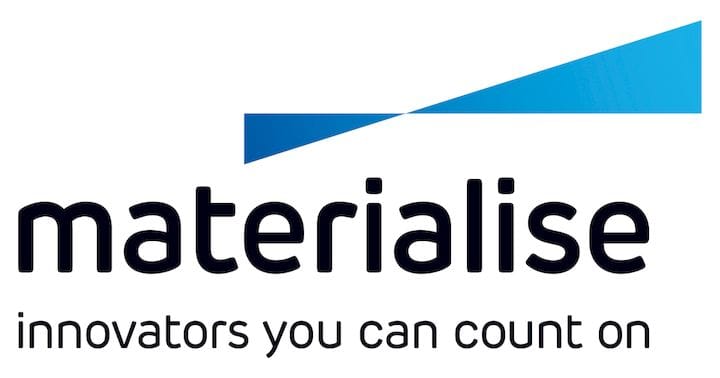
Materialise detailed their long-term software strategy in a press conference today.
The Belgian company might be thought by some as a 3D print service, but they’re actually far more than that. They have a very significant software toolset that is used by additive manufacturing operations worldwide. Their Magics software, for example, is almost universally used by production AM workshops to set up print jobs. They’ve built tools to enable mass customization applications, including eyewear.
Materialise has been deploying different tools for years, all with the goal of enabling manufacturers to effectively use AM technology.
While this approach has been successful for many years, Materialise is set to transform their software platform into something much more flexible.
The reasons behind this strategy are two-fold. First, they have always believed that increased automation is beneficial for AM operations. But secondly there’s COVID-19.
COVID-19 Effects on AM
The pandemic has significantly affected many businesses, and one of the specific effects has been a breakdown in supply chains. These have been carefully crafted over decades to perform highly efficient just-in-time delivery of components through complex shipping networks. The pandemic dented these networks, causing significant disruption. In the end many businesses simply found themselves without supplies.
Many of these businesses realized the root cause of their supply issues was too strong a dependence on efficient — but fragile — supply chains. The antidote to this dilemma is to use a more flexible supply chain, one that is distributed and thus more robust.
A key element of that flexibility is the capability to make different parts on demand. Typically modern factories, though efficient, take months to configure before production can commence. An attractive alternative for many types of production has been 3D printing technology, which can, in theory, produce different parts on demand.
Like others in our industry, Materialise observed this push towards use of AM by their clients. However, there is a persistent problem in many factories.
According to Materialise CEO Bart Van der Schueren:
“Usually the 3D printers operate as a silo, separated from the rest of the production environment.”
Further, most AM systems are operated by standalone software that resides on site. This tends to isolate the operation of the AM equipment from the usually highly integrated remainder of the factory. The problem can be even worse as equipment from multiple vendors often cannot be centrally managed, even with on-premises software.
Distributed Production and AM
The big problem occurs when you combine these factors together.
Many manufacturers now want to develop more flexible and resilient factory operations. This requires a way to distribute the operation across a geography, yet still manage all activity centrally. This should be achievable with integrated factory software that’s often used by manufacturers.
Except for those 3D printers in the corner of the factory.
The result of this collision is that 3D printing technology will be left out of the emerging distributed manufacturing networks, unless someone creates software that can provide cloud-based management for AM equipment that integrates with factory systems.
Materialise wants to be that creator, and consequently their strategy is to develop a software platform to do just that. They’ve recently taken out an option to acquire a third party service that already has some of this functionality, and that could speed up their deployment. Materialise says they could have this functionality available in 2022.
This is quite important because the pandemic has caused manufacturers to begin moving to these distributed configurations now, whereas in pre-pandemic days such a switch was more aspirational.
If Materialise is successful this could not only enable distributed manufacturers to incorporate AM into their networks, it could generate an overall increase in AM usage: even today centralized factories have trouble integrating AM approaches due to their siloed software tools. That barrier would evaporate quickly under Materialise’s cloud software strategy.
Via Materialise
